- Home
- Peter Ackroyd
Revolution, a History of England, Volume 4 Page 9
Revolution, a History of England, Volume 4 Read online
Page 9
The growing class of readers, or what soon became known as ‘the reading public’, fastened upon what was contemporary and what was immediate; it took an unusual and even perhaps unprecedented interest in the affairs and interests of polite society. It was the immediate bed from which rose the novel in all of its forms, and of which the journalists Swift and Defoe were two of the most accomplished practitioners. And what might else explain the rise of what could be called the conversational, rather than rhetorical, drama at the command of Congreve, Vanbrugh and John Gay?
If we are to hear, or overhear, the voice of the age of Anne, therefore, it is perhaps in the pages of its literature. The tone is at once learned and comic, inspired and facetious; it is quite unpretentious and is designed in fact to deflate pomposity of every description. It represents a reaction against revolutions, glorious or otherwise, against warfare that seemed both endless and unproductive, against political and religious animosities that were now regarded as outdated and unnecessary.
Satire of course had existed as long as fools or hypocrites could be found but, after the bitter controversies and proclaimed certainties of the seventeenth century, its themes became enlarged with irony and condescension. It was not enough to defeat an opponent in argument. It was necessary to ridicule him. Pope and Swift, in particular, were masters of acerbic derision. It was the temper of the time. All the members of the Scriblerus Club had already constructed several satirical personae.
Pope himself had much to be acerbic about. As a Catholic he was debarred from university or government employment; he suffered from tuberculosis of the spine that rendered him a cripple of low and bent stature. It was he who complained about ‘this long disease, my life’. His poetry, composed largely in heroic couplets, became first the fashion and then the expression of the period. His couplets evinced the formal and artificial style, at a time when formality and artificiality were in any case the marks of good breeding.
Yet the safety of the clipped couplet did not, in the case of Pope, preclude eloquence and genuine feeling. The early decades of the eighteenth century are depicted as those of restraint, but there was much wild feeling and enthusiasm to be restrained. It was no longer considered proper to wear your heart upon your sleeve. All was to be achieved by allusion and indirection. If it were indeed an ‘age of reason’, as the older textbooks allege, it was reason that gave the point to passionate analysis. What could be a more passionate pursuit than to reason oneself out of the darkness of the recent past?
The Memoirs was from the start a collaborative enterprise designed, in the words of Pope, ‘to have ridiculed all the false tastes in learning, under the character of a man of capacity enough that he had dipped in every art and science, but injudiciously in each’. So the little book became an assault against fashionable taste and the purveyors of contemporary wisdom, conceived in the spirit of what Swift described on his funerary monument as ‘saeva Indignatio’ or savage indignation. In particular the Scriblerians, if the term may be allowed, were the absolute opponents of contemporary science – known as ‘mechanical philosophy’ or ‘corpuscular philosophy’ – that reduced everything to its material constituents; they abhorred the technical language of the experimentalists as so much nonsense, as well as the assumption that there was no spiritual component to be discovered in the world.
There was no shortage of other targets. One of the intellectual controversies of the time was that between the ‘Ancients’ and the ‘Moderns’, those who revered classical learning against those who followed the new philosophy of science and experiment. Both schools, or tendencies, are satirized in the Memoirs for their avowal of fixed positions and of unfruitful speculation. The book ridicules the coffee-house bores, the clubbable bores and the pedantic bores who took advantage of what was a relatively new social freedom. Everyone seemed entitled to his or her own opinion.
Martin Scriblerus is born in the neighbourhood of Seven Dials, well known for its astrologers and doctors who, in the absence of proper medical attention, were the resort of both rich and poor. The allusion here is to the credulity and superstition that swept through the eighteenth century, led from the front by those who put their faith in book learning rather than experience. Martin’s father, Cornelius Scriblerus, had previously consulted the works of Aristotle to discover the best moment for conception.
Martin himself is first seen frequenting ‘the outside of the palace of St James’s’ in the reign of Queen Anne ‘which, notwithstanding those happy times which succeeded, every Englishman has not forgotten’. He was later to be glimpsed ‘under the piazza by the dancing room in St James’s’, and it is not wholly impossible that this neighbourhood contained his simple lodging ‘in a small chamber up four pairs of stairs’. It may even have resembled Arbuthnot’s own lodgings in the palace.
The author is wary of astonishing the reader with too much low detail, however, since ‘I dare promise the reader that, whenever he thinks any one chapter dull, the style will be immediately changed in the next’. The remark is in the same tone as that of a later passage in which it is revealed that ‘the style of this chapter in the original memoirs is so singularly different from the rest that it is hard to conceive by whom it was penned’. It is impossible to think of a seventeenth-century author who would write in such a manner. It is, however, very close to the style of Tristram Shandy, the first two volumes of which were published in 1759. The combination of cleverness and facetiousness can be considered as a true token of eighteenth-century sensibility.
One habit of the time was ‘the recovery of manuscripts, the effossion [digging up] of coins, the procuring of mummies’. In this period, too, much attention was paid to physiognomists, phrenologists and chirographists who analysed the faces, heads and palms of their clients in the belief that inward qualities could be deciphered from outward signs. The Scriblerus Club satirizes all of these pseudo-sciences that, together with quack remedies like hartshorn and Hungary water, dominated the world of eighteenth-century medicine. ‘What makes the English phlegmatic and melancholy but beef? What renders the Welsh so hot and choleric but cheese and leeks? The French derive their levity from their soups, frogs and mushrooms.’
Medical practice, as well as theory, was investigated. Martin Scriblerus, in search of enlightenment, ‘purchased the body of a malefactor’, freshly hanged, and ‘hired a room for its dissection, near the Pest-fields in St Giles’s, at a little distance from the Tyburn Road’. The ‘pest-fields’ were those open spaces where the victims of the plague had been buried in the previous century. His manservant carried the corpse back in a hackney coach at midnight, for fear of provoking attention, but when the corpse farts (a very eighteenth-century touch) the household is plunged into confusion. In the ensuing commotion the manservant is brought before a local justice, but his plea in his own defence is composed entirely of puns. This was another hit against the tastes of contemporaries. In 1719 was published The Art of Punning; or, The Flower of Languages; it was composed by Tom Hood, one of the notable ‘punsters’ of the time.
The narrators also satirize the modern practices of logic and philosophy that turn antique syllogisms and propositions into absurdity. This was the prolonged curse of scholasticism that had dominated the medieval period. How do angels pass from one extreme to another without going through the middle? Much of this was aimed at the universities where the philosophies of Aristotle and Aquinas were still considered to be holy writ. Classicism was the only curriculum.
The young Scriblerus also evinces an interest in the literatures of Persia and Araby. He takes pleasure in the exhibitions of wild animals and other ‘wonders’ that delighted the people. They included a dwarf and conjoined twins, the horn of a unicorn, the foot of an elk and the thigh bone of a giant. The curious came to the freak shows, like that ‘at Mr John Pratt’s, at the Angel in Cornhill’ or that ‘over against the Mews Gate at Charing Cross’, and had to pay sixpence for entrance. Foreign lands were also the object of wonder and enquiry rathe
r than of possession and domination. This was still the world of Samuel Johnson’s The History of Rasselas, Prince of Abissinia and other exotic fantasies.
The Scriblerus Club itself seems to have dissolved, or gone into a decline, soon after the death of Queen Anne in the summer of 1714. Yet the close connection of wit and satire anticipated the greatest works of its members, among them Gulliver’s Travels, The Dunciad and The Beggar’s Opera. It was part of a unique period in English literature as well as English history.
8
The Germans are coming!
Queen Anne died on the morning of 1 August 1714, and on the same day the high officers of state congregated at the gateway of St James’s Palace where they proclaimed ‘that the high and mighty Prince George, Elector of Brunswick-Lüneburg, is now, by the death of our late Sovereign, of happy memory, become our only lawful and rightful liege Lord, George, by the Grace of God, King of Great Britain, France and Ireland, Defender of the Faith etcetera . . . ’. George had won the race over James Edward. It has been estimated that fifty-seven other people had a better hereditary claim; nevertheless the elector of Hanover, as he was also informally called, was the only Protestant among them and had therefore been acclaimed as monarch.
The cry went up after the proclamation that the Germans were coming in droves, eager to adorn themselves with the treasures of England, but in the event only ninety staff or entourage made the journey with the new king. Among them were the usual courtiers and officials, together with apothecaries and tailors as well as a complete kitchen staff (the culinary expertise of the new and unknown country could not be taken for granted); on the ship also were George’s two Turkish body servants, Mehmet and Mustafa, and two court mistresses who caused almost equal astonishment.
Fräulein von Schulenberg was a lover of long standing, and one of her two ‘nieces’ betrayed a close resemblance to the new king; she had first refused to travel to England with George, according to Lady Mary Wortley Montagu, ‘fearing that the people of England who, she thought, were accustomed to use their kings barbarously, might chop off his head in the first fortnight’. She changed her mind only when she learned that her rival was also on the way. At a later date Horace Walpole, the man of letters and connoisseur, recalled Frau von Kielmannsegge sporting ‘two fierce black eyes, large and rolling . . . two acres of cheek spread with crimson, an ocean of neck that overflowed’.
The London mob was highly delighted by the fact that one was very thin, and the other very fat. It was like a nursery rhyme. The new sovereign’s unhappy wife, Sophia, was not to be seen. She had been imprisoned for almost twenty years in the castle of Ahlden after being found in an illicit liaison with a German count; the count himself disappeared in mysterious circumstances, thus giving the Hanoverian court something of the atmosphere of the castle of Otranto. George’s wife never left confinement, but her son did eventually become king of England.
‘George Ludwig’ landed at Greenwich on 18 September and in the following month was crowned in Westminster Hall. He was not exactly a golden prince. Sophia, before their doomed marriage, had shouted that ‘I will not marry the pig snout’ and thrown his miniature against a wall. She was perhaps a little unfair. He was rather short but his physiognomy was not out of the ordinary; he had a somewhat heavy countenance, with a high broad forehead, which showed little sign of liveliness or animation. He had a large nose and what were described as ‘vacant’ eyes. He was reserved to the point of woodenness, a natural hesitation that made him slow in speech and in thought. As a result he was considered to be stiff and cold in manner, but this may only have been a defensive stance in an alien environment. As Lord Chesterfield said, England was too big for him.
It is not clear whether or not he could speak English, but surviving documents suggest that he understood a lot and wrote a little. In any case he had French, the international language of diplomacy, to support him. He had certain characteristics that he shared with the preceding Stuart dynasty, among them ruthlessness and stubbornness. Perhaps these are the traits of any successful monarchy. He had embarked on his first military campaign at the age of fifteen so he could not be accused of faint-heartedness, and he had ruled Hanover for sixteen years. He was no neophyte. Thackeray wrote of him that ‘he was more than fifty years of age when he came among us; we took him because we wanted him, because he served our turn; we laughed at his uncouth German ways, and sneered at him. He took our loyalty for what it was; laid hands on what money he could; kept us assuredly from Popery and wooden shoes. I, for one, would have been on his side in those days.’ Wooden shoes were a token of French servitude.
Since he was by nature reserved and informal he did not keep a majestic court. He maintained an inner German retinue that carried out the necessary duties, and as a result he seemed to his subjects to be essentially remote. He rose early but did not emerge from his chamber until noon to consult his ministers; after these meetings and conferences, which could last as long as three hours, he retired once more to his bedchamber. He walked in the gardens of St James’s in the late afternoon, and spent the evening playing cards with one of his mistresses. Visits to the opera or theatre were occasional, and they were not accompanied by any ritual or fanfare; the king avoided the royal box. The courtiers themselves were not vainglorious; they did not dazzle; there was no attempt to maintain the cult of monarchy. With the exception of Mustafa and Mehmet, and of course the thin and the fat mistresses, there was nothing exceptional about them.
The new king came to England with an instinctive dislike of Tories. He believed, rightly or wrongly, that many of them still supported the Stuart cause. And he could not forgive the Tory politicians who engineered the treaty of Utrecht by leaving their allies deserted on the field, of whose number he was of course one. Nevertheless it was widely believed that, like Anne, he would attempt a moderate administration combined of both parties; but in practice this even-handedness lasted for a moment only.
On his accession, for example, the new king stripped the duke of Ormonde of his military command; Ormonde had succeeded Marlborough, and had given the order for his troops to stand down. In the following year the duke was impeached for high treason on suspicion of supporting the Jacobite cause. The Tories in general were cast into outer darkness accompanied by menaces of impeachment, dismissal or permanent exclusion from office. The great earl of Oxford, once mere Robert Harley until the dagger went through his waistcoat, was sent to the Tower where he remained for two years. Others, like Ormonde himself, fled to France and to the embrace of the ‘Old Pretender’. These self-imposed exiles flocking to the court of Saint-Germain did more harm to the Tory Party than a thousand vicious pamphlets. To be a Tory was now reckoned, in some quarters, to be a Jacobite. The established Anglicans, who were associated with the Tories, also lost some of their lustre; the king conformed to the national liturgy, but at heart he remained a fervent Lutheran.
The new Whig administration, now sheltering under the aegis of the king, was no longer a radical force in politics; it had quite naturally lost the anti-monarchical fervour, for example, it had adopted during the ‘exclusion crisis’ of 1679 when James II was the target. It had now become the ruling party; it represented the merchants, the tradesmen, the professional classes and the urban gentry who controlled the financial institutions of the country. Yet any ruling class, faced with no coherent opposition, will become an arena for ambition, envy and private antagonism; there is always someone who wishes to be pre-eminent.
There were indeed many splits and schisms between the dominant Whigs, leading the French ambassador to remark that the English would crucify Christ again if he returned to govern England. Young Whigs fought against old Whigs, the ‘court’ Whigs were opposed to the ‘country’ Whigs, the parliamentary Whigs were hostile to the royalist Whigs. Without an interesting or interested Tory party, parliament seemed to be of no earthly use. One Tory member, Sir Charles Sedley, was rebuked for walking along the Mall during a particularly important debate. He re
plied that he knew exactly what was going to happen, ‘and an honest man signifies no more in that house to rectify it, than a drop of essence to perfume a pail full of stale piss’.
Yet the Whigs themselves were not entirely approved or accepted. The majority of the population, most of whom did not have a vote, were equally indifferent to the German dynasty; it was estimated in 1715 by the Austrian Resident in England, Johann Philipp Hoffmann, that two-thirds of the nation were in fact actively hostile to the Hanoverians. This was an exaggeration. Riots in the streets of London were commonplace, however, and attacks upon the meeting places of dissenters continued as if the Sacheverell ‘High Church’ riots had never ceased. On the anniversary of the Restoration of 1660 a crowd assembled before the statue of Queen Anne, in front of St Paul’s Cathedral, and called out ‘Down with the house of Hanover!’ and ‘God bless King James III!’ The health of the ‘Old Pretender’ was drunk in inns and taverns all over the country. On the evening of King George’s birthday, May 28, a mob gathered at the Stock Exchange, armed with sticks and clubs, calling out for ‘High Church and Ormonde!’ At Cheapside the people cried out ‘No Hanoverian! No Presbyterian Government!’ The London Record Office reported the arrest of one citizen who laid ‘fifty guineas that the king did not reign twelve months’.
The protests were not on a revolutionary scale but they shook the new Whig ministry and questioned its administration of the rule of law. This was the burning context for the drawing-up of a statute known as the ‘Riot Act’ by means of which a crowd of twelve or more was guilty of a capital felony if it failed to disperse within an hour of a proclamation ordering it so to do. Any officers, under the instructions of the magistrates, were granted indemnity for their actions in dispersing the new breed of rioters. The Act was of great benefit to the authorities in periods of civil unrest, such as disruption in time of famine or unemployment, and was in fact so useful that it remained on the statute book until 1967.

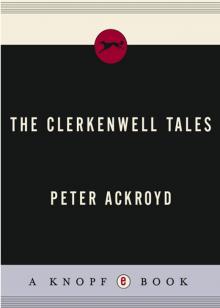 The Clerkenwell Tales
The Clerkenwell Tales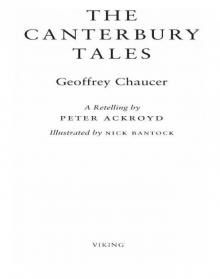 The Canterbury Tales
The Canterbury Tales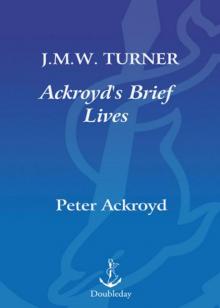 J. M. W. Turner
J. M. W. Turner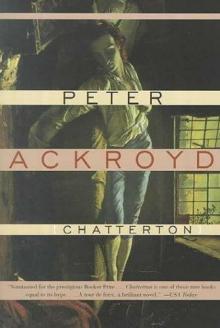 Chatterton
Chatterton The Canterbury Tales – A Retelling
The Canterbury Tales – A Retelling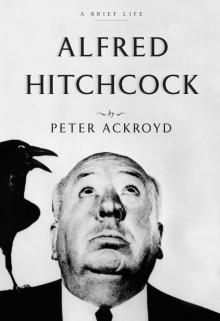 Alfred Hitchcock
Alfred Hitchcock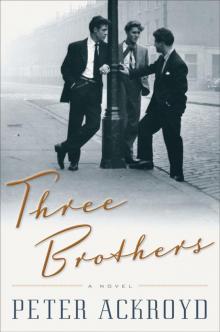 Three Brothers
Three Brothers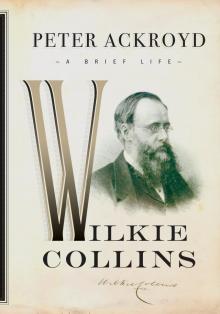 Wilkie Collins
Wilkie Collins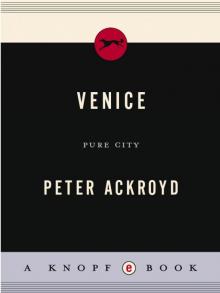 Venice
Venice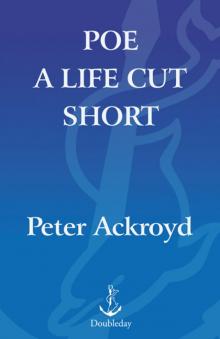 Poe
Poe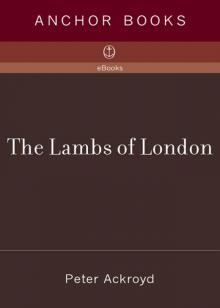 The Lambs of London
The Lambs of London London
London Queer City
Queer City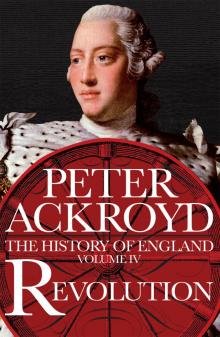 Revolution, a History of England, Volume 4
Revolution, a History of England, Volume 4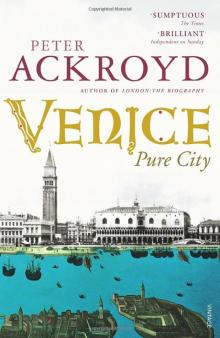 Venice: Pure City
Venice: Pure City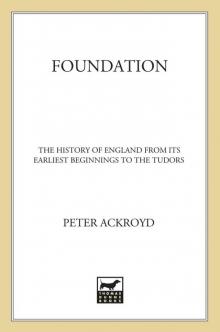 Foundation
Foundation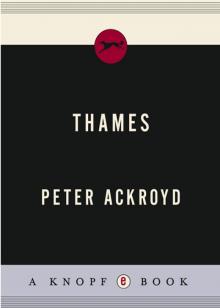 Thames
Thames The Plato Papers
The Plato Papers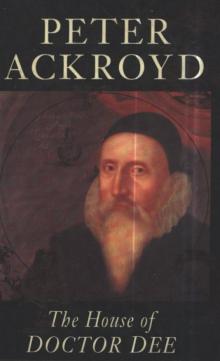 The house of Doctor Dee
The house of Doctor Dee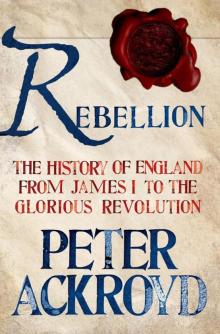 Rebellion: The History of England from James I to the Glorious Revolution
Rebellion: The History of England from James I to the Glorious Revolution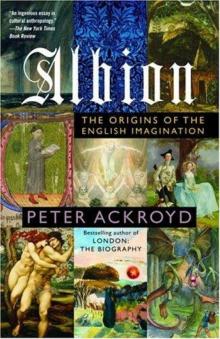 Albion: The Origins of the English Imagination
Albion: The Origins of the English Imagination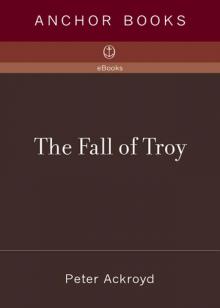 The Fall of Troy
The Fall of Troy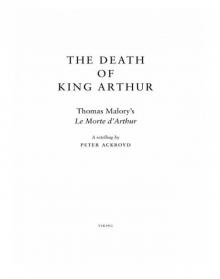 The Death of King Arthur
The Death of King Arthur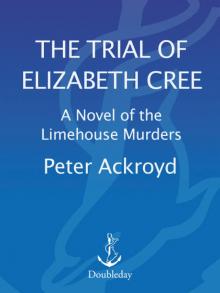 The Trial of Elizabeth Cree
The Trial of Elizabeth Cree London: The Biography
London: The Biography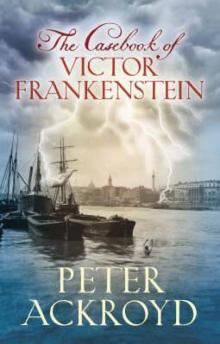 The Casebook of Victor Frankenstein
The Casebook of Victor Frankenstein Hawksmoor
Hawksmoor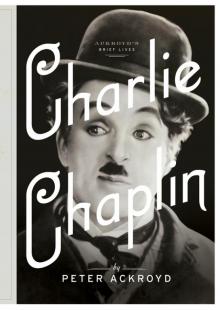 Charlie Chaplin
Charlie Chaplin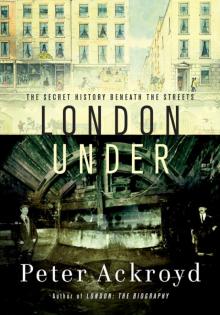 London Under
London Under